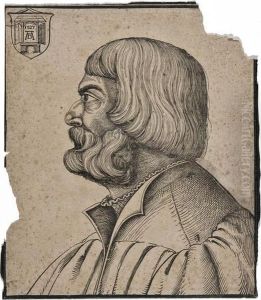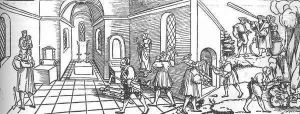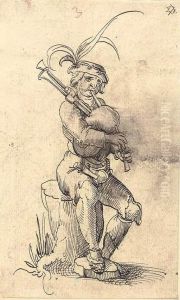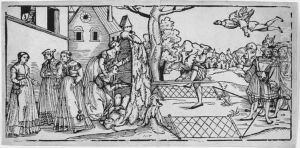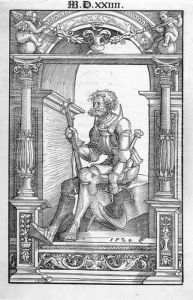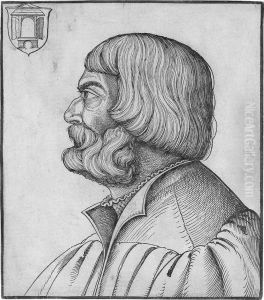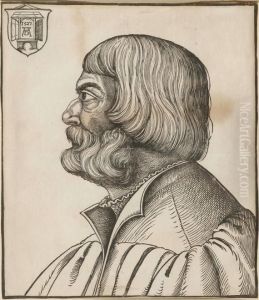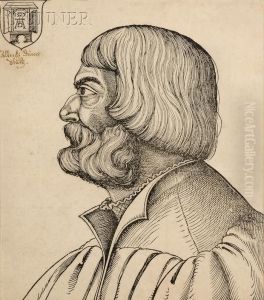Erhard Schon Paintings
Erhard Schön, a notable German artist, was born in Nuremberg in 1491. He was a prominent figure in the German Renaissance, primarily known for his work as a woodcut designer and printmaker. Schön's career flourished in a period marked by significant artistic and cultural developments in Europe, and he became one of the leading artists in the medium of woodcuts in Germany, following the legacy of Albrecht Dürer, another renowned artist from Nuremberg.
Schön's artistic output was prolific, and his works reflected the diverse interests and intellectual currents of his time. He was deeply influenced by the religious, social, and political upheavals of the 16th century, especially the Reformation. His art often carried satirical and reformist themes, critiquing the Catholic Church and the societal norms of his day. This bold thematic approach in his work aligned him with the humanist and reformist circles that were gaining momentum in Europe.
Throughout his career, Erhard Schön collaborated with various publishers and other artists, contributing to the spread of the Reformation ideas through his prints. His works were not limited to religious or political subjects; he also produced a wide array of designs for book illustrations, decorative prints, and playing cards. Schön's style evolved over the years, showcasing his mastery over the intricate details possible in woodcut techniques and his ability to convey complex narratives and emotions through his art.
Despite his contributions to the art of the German Renaissance and the Reformation, Erhard Schön's name might not be as widely recognized as some of his contemporaries. However, his work remains an essential part of the study of Renaissance art and culture, offering insights into the era's social and political landscapes as seen through the lens of a skilled and thoughtful artist.
Erhard Schön passed away in 1542 in his hometown of Nuremberg. His legacy, embedded in his woodcuts, continues to be studied and appreciated for its historical significance and artistic merit.
